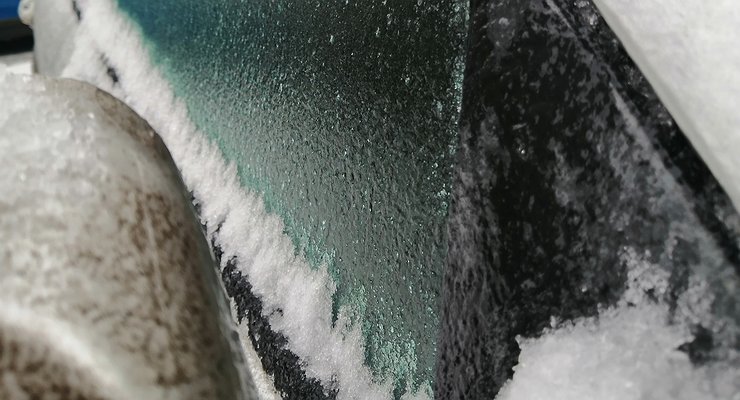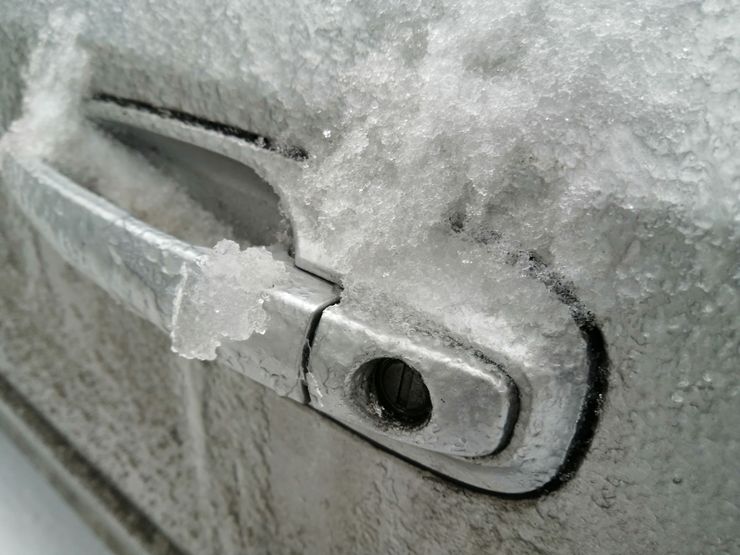Which holes in a car are particularly vulnerable to black ice
- December 22, 2022
- 0
Freezing is not just a problem with access to a car for the owner. It is also a problem for the car itself. The AvtoVzglyad portal tells about
Freezing is not just a problem with access to a car for the owner. It is also a problem for the car itself. The AvtoVzglyad portal tells about

“Water will find a hole,” says folk wisdom. But it does not say anything that, having found a “hole”, it can also freeze in it. Nothing bad will happen to a normal car from the liquid moisture that falls from the sky. But in a solid state of matter, the same substance can give the car owner a lot of unpleasant minutes. First of all, it is impossible not to mention the hatch of the gas tank. Almost always, due to black ice, it refuses to open. Water flows and accumulates in the gaps between this cover and the body. And then it freezes. The most vile thing is that it is extremely difficult to get the ice out of this narrow crevice.
And if the car needs to be refueled urgently at the same time, the car owner will have to show a lot of dexterity to make this possible. The task is complicated by the fact that it is necessary to remove the ice in the gap between the hatch and the body, but at the same time not to damage the paintwork. Happiness, if it is possible to drive a car in the heat – in a garage or a heated parking lot. That’s where the ice melts.
After that, it is imperative to open the hatch and wipe dry everything and everything there – so that there is nothing to freeze in the future. The second “ambush” after black ice can be the fifth door opening mechanism for crossovers and SUVs – if it is not hidden under the bottom. This is usually the case with “old school” car models in this category.
The problem is that even when the cabin is warm, the ice from the openings in the tailgate opening handle cannot thaw on its own. You will have to choose it carefully, or resort to the “warm garage method”. If he can be found of course.
Black ice can be a big “surprise” to the owner of a car with a weak or dead battery. Even once in her salon, he won’t be able to start the engine. After all, for this you need to “light” the engine. And this is impossible when the gaps between the hood and the body are sealed with ice. To melt it, some drivers use boiling water in such cases. But this is quite dangerous for the paintwork: it can crack due to temperature fluctuations.
Well, another “hole” (or rather a whole series), where frozen water can do damage, lives in the wiper mechanism. It happens that freezing rain falls on a small snowball that covers the construction of the “janitor”. And freezes and turns it into a solid monolith. At the same time, the mobility of the hinges of the belt and the brush itself drops to zero, because the moisture that has entered their joints is frozen. The whole assembly fails and cannot adhere properly to the glass. De-icing is another challenge, as it requires accuracy and eliminates the use of force. After all, this mechanism is not designed for rough use.

“Water will find a hole,” says folk wisdom. But it does not say anything that, having found a “hole”, it can also freeze in it. Nothing bad will happen to a normal car from the liquid moisture that falls from the sky. But in a solid state of matter, the same substance can give the car owner a lot of unpleasant minutes. First of all, it is impossible not to mention the hatch of the gas tank. Almost always, due to black ice, it refuses to open. Water flows and accumulates in the gaps between this cover and the body. And then it freezes. The most common thing is that it is extremely difficult to get the ice out of this narrow opening.
And if the car needs to be refueled urgently at the same time, the car owner will have to show a lot of dexterity to make this possible. The task is complicated by the fact that it is necessary to remove the ice in the gap between the hatch and the body, but at the same time not to damage the paintwork. Happiness, if it is possible to drive a car in the heat – in a garage or a heated parking lot. That’s where the ice melts.
After that, it is imperative to open the hatch and wipe dry everything and everything there – so that there is nothing to freeze in the future. The second “ambush” after black ice can be the fifth door opening mechanism for crossovers and SUVs – if it is not hidden under the bottom. This is usually the case with “old school” car models in this category.
The problem is that even when the cabin is warm, the ice from the openings in the tailgate opening handle cannot thaw on its own. You will have to choose it carefully, or resort to the “warm garage method”. If he can be found of course.
Black ice can be a big “surprise” to the owner of a car with a weak or dead battery. Even once in her salon, he won’t be able to start the engine. After all, for this you need to “light” the engine. And this is impossible when the gaps between the hood and the body are sealed with ice. To melt it, some drivers use boiling water in such cases. But this is quite dangerous for the paintwork: it can crack from temperature fluctuations.
Well, another “hole” (or rather a whole series), where frozen water can do damage, lives in the wiper mechanism. It happens that freezing rain falls on a small snowball that covers the construction of the “janitor”. And freezes and turns it into a solid monolith. At the same time, the mobility of the hinges of the belt and the brush itself drops to zero, because the moisture that has entered their joints is frozen. The whole assembly fails and cannot adhere properly to the glass. De-icing is another challenge, as it requires accuracy and eliminates the use of force. After all, this mechanism is not designed for rough use.
Source: Avto Vzglyad
Donald Salinas is an experienced automobile journalist and writer for Div Bracket. He brings his readers the latest news and developments from the world of automobiles, offering a unique and knowledgeable perspective on the latest trends and innovations in the automotive industry.